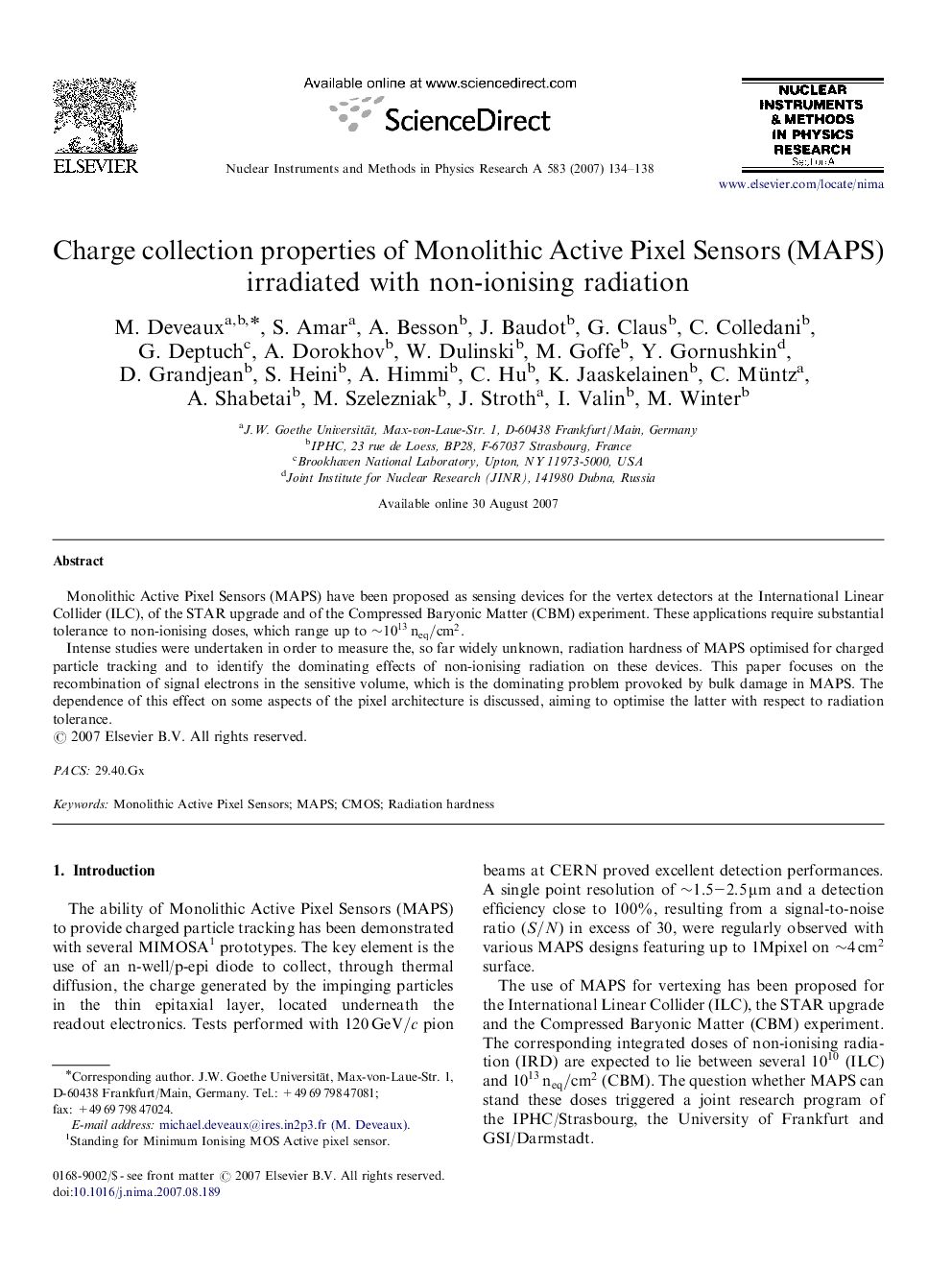| Article ID | Journal | Published Year | Pages | File Type |
|---|---|---|---|---|
| 1830400 | Nuclear Instruments and Methods in Physics Research Section A: Accelerators, Spectrometers, Detectors and Associated Equipment | 2007 | 5 Pages |
Monolithic Active Pixel Sensors (MAPS) have been proposed as sensing devices for the vertex detectors at the International Linear Collider (ILC), of the STAR upgrade and of the Compressed Baryonic Matter (CBM) experiment. These applications require substantial tolerance to non-ionising doses, which range up to ∼1013neq/cm2.Intense studies were undertaken in order to measure the, so far widely unknown, radiation hardness of MAPS optimised for charged particle tracking and to identify the dominating effects of non-ionising radiation on these devices. This paper focuses on the recombination of signal electrons in the sensitive volume, which is the dominating problem provoked by bulk damage in MAPS. The dependence of this effect on some aspects of the pixel architecture is discussed, aiming to optimise the latter with respect to radiation tolerance.
